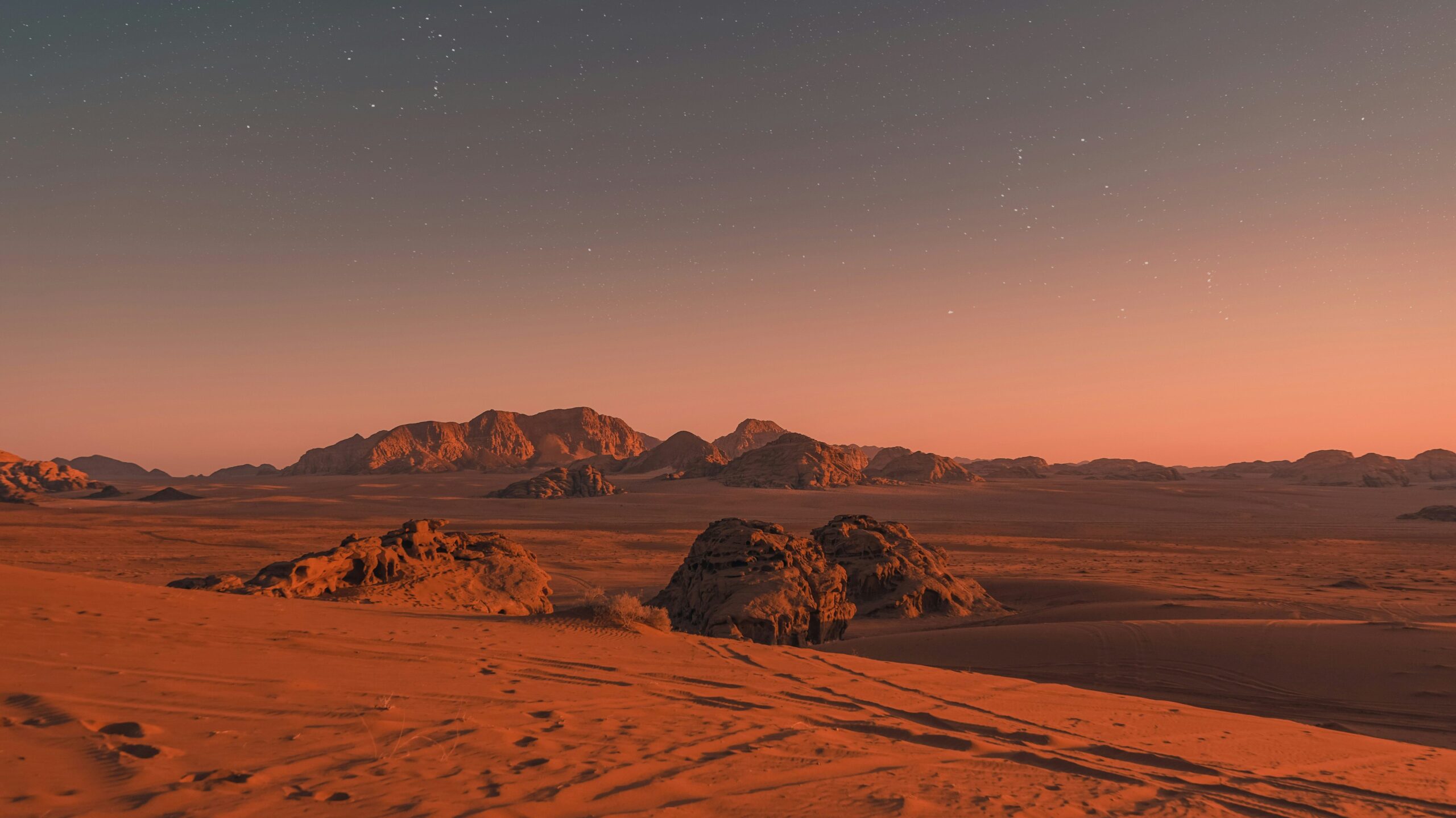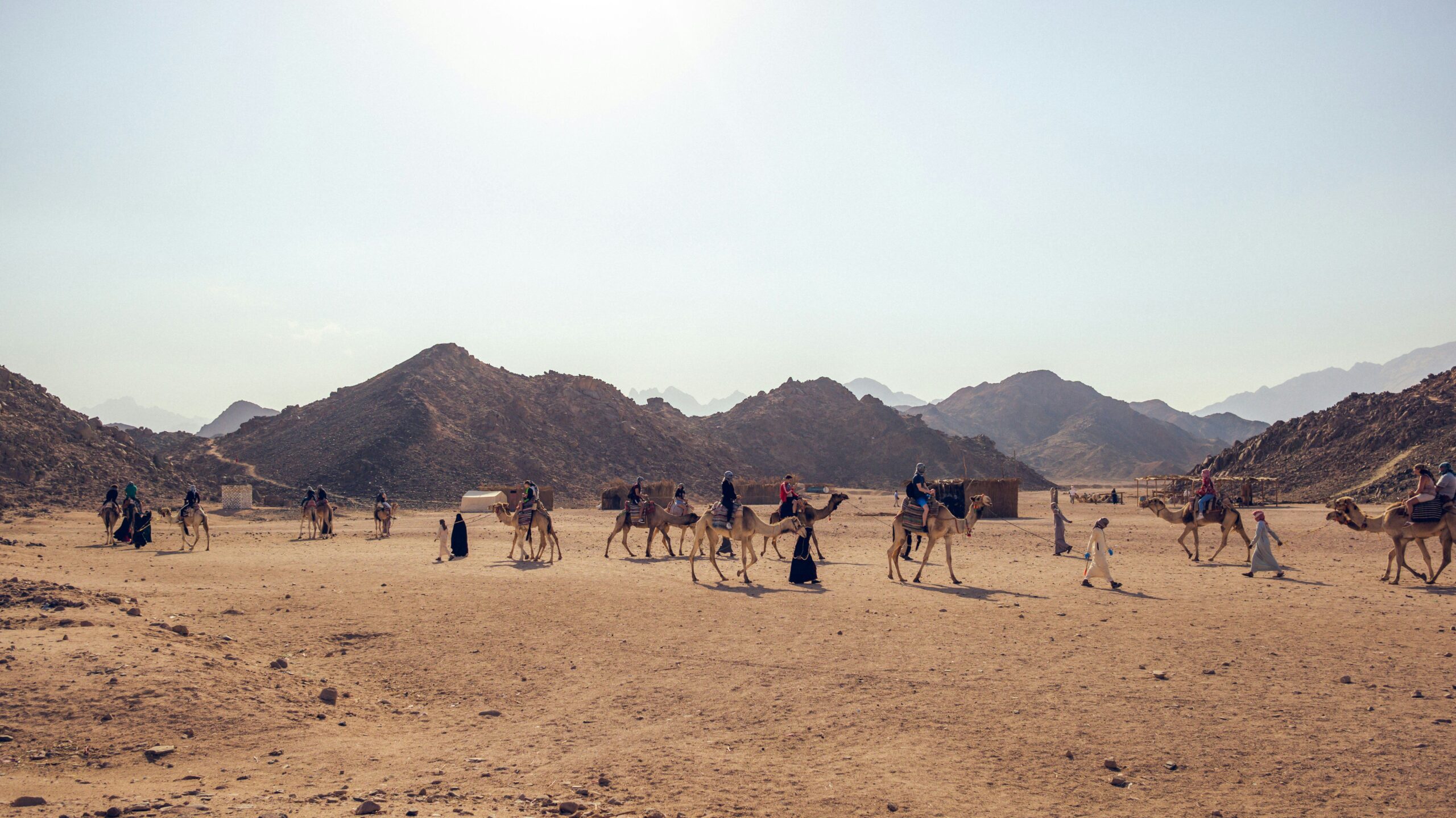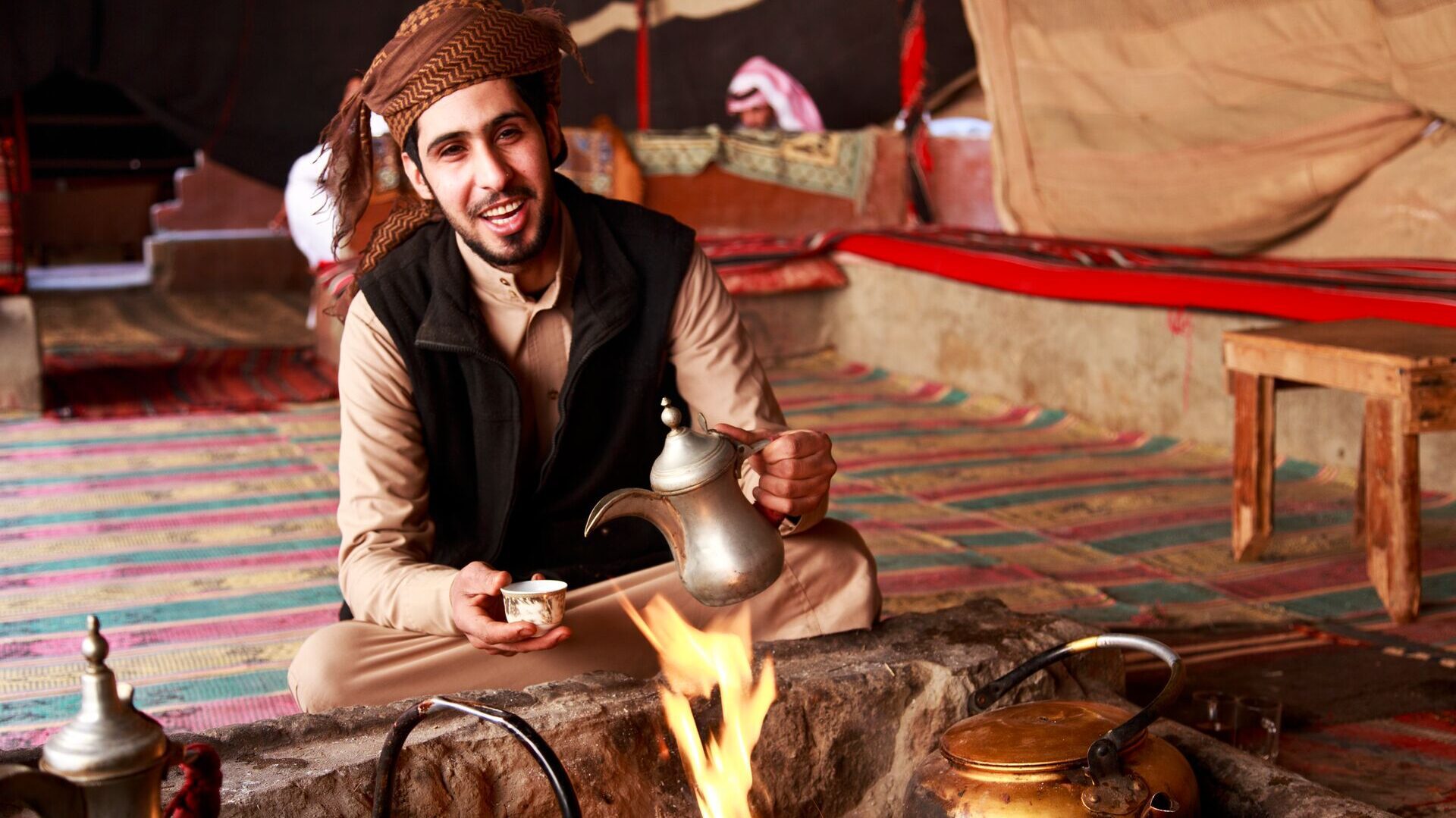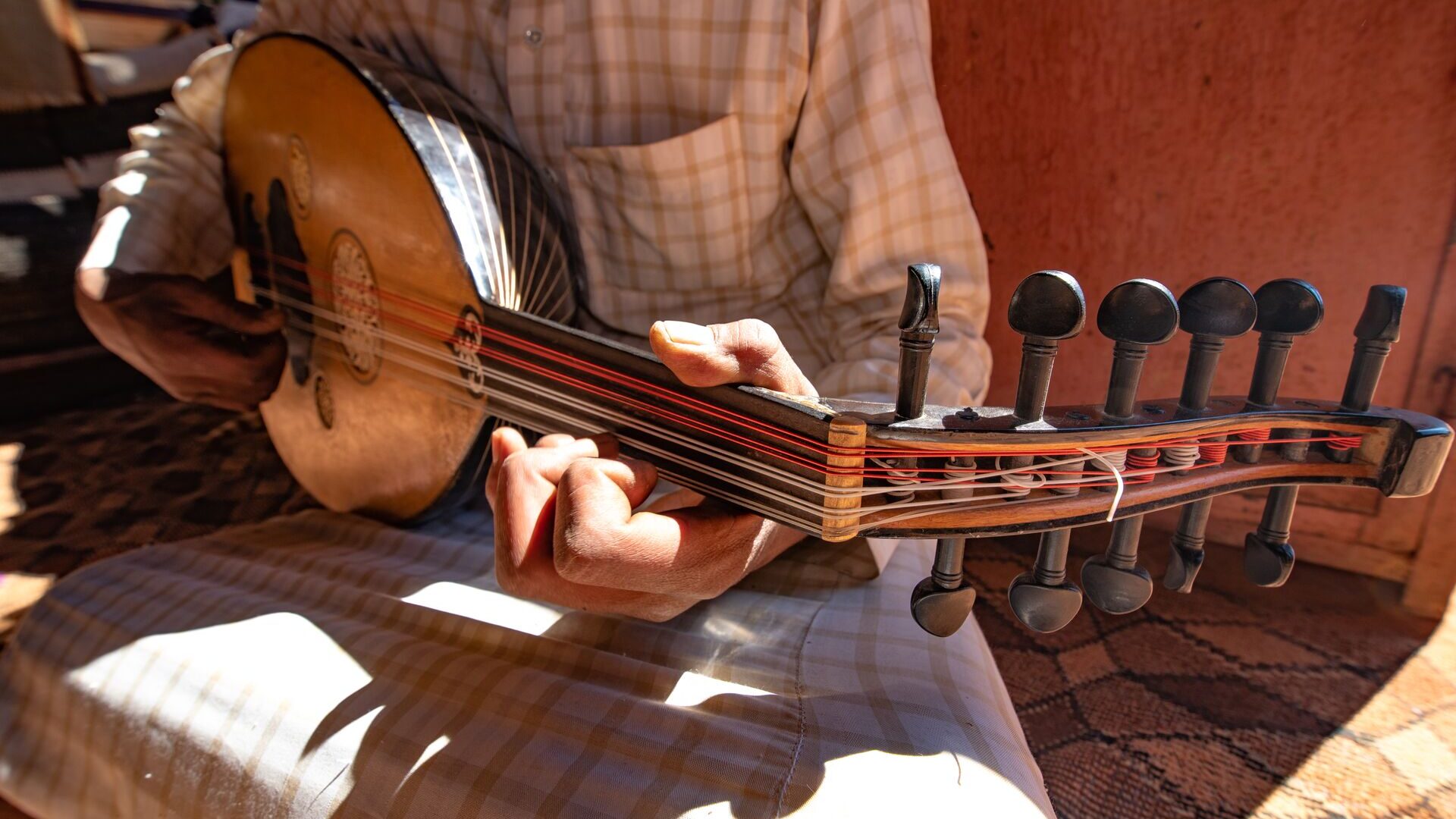Recently updated on May 2nd, 2025 at 10:40 am
Desert living isn’t for the fainthearted, but that’s exactly what the Bedouins of Jordan have been perfecting for the last few thousand years – and now their camps are open for you to experience the natural beauty of the desert firsthand, while learning about their nomadic history.
On Trafalgar’s Jordan Experience, your Stays with Stories is at the El Ammarin Bedouin Camp in the Wadi Rum desert. We spoke with the director of the camp about the history of the Bedouins of Jordan, their desert home, and what you can expect when you stay with them.
Tour not found.

Desert home
When you think of a desert, you’re probably picturing something just like Wadi Rum. The desert valley in southern Jordan stretches across a mostly flat landscape of burnt orange sand, set against a magnificent backdrop of sandstone mountains. It’s no little-kept secret – you might recognize it from mega blockbusters like the Dune or Star Wars movies.
It can reach scorching temperatures in the daytime of up to 38°C (104°F), while plummeting once the sun sets to below 10°C (50°F). It’s not an easy place to live, but that hasn’t stopped the Bedouins, Jordan’s nomadic people, from finding a way. The word Bedouin is derived from the Arabic word for desert dweller, bedwa, and the Bedouins of Jordan are nomadic camel-raising tribes that call this desert home. Bedouin culture is inextricably embedded in this landscape.


The Bedouins of Jordan
The history of the Bedouins of Jordan goes back thousands of years, and it is widely accepted that the majority of Jordan’s population is of Bedouin origin. Hear the history and traditions of Bedouin culture firsthand from Abu Tamer Al Ammarin, director of the Al Ammarin camp where you’ll stay when you travel with Trafalgar.
Once Jordan gained independence in 1946, the country became officially known as the Hashemite Kingdom of Jordan. “The Hashemite Kingdom of Jordan is the origin of the Bedouins, and the Bedouins are present in all regions of the Kingdom,” says Tamer. “This land has been inhabited by the Bedouins for thousands of years, since the days of Ottomans. They were present in this area, and this land is still theirs.”
“This land has belonged to the Al Ammarin tribe for generations,” says Tamer. “We have formed an association, to benefit the local community on their land and their existing tribal representation.” Tamer is talking about the association with the local community of Beidha, with the aim to nurture Bedouin culture and providing the Ammarin tribe with sustainable income from the camp.
“Bedouins are proud of their heritage and of our Hashemite Kingdom of Jordan, and proud to have joined the Royal Family,” says Tamer. The Jordanian government provides the Bedouin with different services such as education, housing and health clinics, though some Bedouins give it up and prefer their traditional nomadic lifestyle.


Traditional Bedouin practices
“Traditional clothing has changed due to the evolution of life,” explains Tamer. “However there are still people in Jordan living in the old ways, like traditional tents.” Nowadays some Bedouin are still entirely nomadic, some are semi-settled, and some are permanently settled.
“Bedouins have customs, traditions and skills – they have tents made of goat wool, they are skilled with weapons, and they have authentic Arabic coffee which everyone takes pride in drinking,” says Tamer. Bedouin communities are distinguished by the black goat-hair tents, weaved by the women in the tribes using techniques passed down through generations. Why goat wool? They help regulate the temperature, keeping the tents cool in the day, warm at night, and protected from rain.
Tour not found.Bedouin hospitality preceeds these ancient tribes; the Bedouin people will ensure guests eat before they do, no matter if food is sparse. A guest can stay with the Bedouin for up to three days with no questions asked – only after three days will their hosts ask what their business or intentions are.
“Bedouins have customs specifically regarding coffee, which involves three cups,” explains Tamer. The first is ‘haif’, which is ‘for the soul’; the second is ‘saif’, meaning ‘the sword’ which celebrated the bravery of the Bedouin; the third is ‘keif’ which is to bring a good mood. If you don’t want any more coffee then you must shake your cup to signal so.
Given their nomadic history and lifestyle, it’s no surprise the Bedouins of Jordan are highly dependent on their camels, which they domesticated from the desert – you can still see wild camel herds in Wadi Rum. The Bedouin camel herds provided them with milk, hair, and a way of trekking across the arid landscapes. “The men have skills like riding camels,” explains Tamer of the Al Ammarin camp today, and many Bedouin have close bonds with their camels.


Staying with the Bedouins of Jordan
Staying with the Al Ammarin camp in the Jordanian desert is your Stays with Stories on Trafalgar’s Jordan Experience, and it’s one that you’ll never forget. You’ll sleep in a goat hair tent, sip sweet tea and Arabic coffee around the campfire as you listen to traditional music, experiencing the legendary Bedouin hospitality. Endless desert views sprawl in front of you as you soak up a breathtaking sunset, before the sky puts on a show for stargazing like you’ve never seen before. If you don’t think you’re ready to take on the nomadic life just yet, then don’t ready – even though you’re in the middle of the desert, you’ll experience the Bedouin lifestyle without losing out on the comfort of a hot shower, real beds, clean bedding and electricity.
Ready to meet the Bedouins of Jordan for yourself? Discover Trafalgar’s Jordan Experience now.